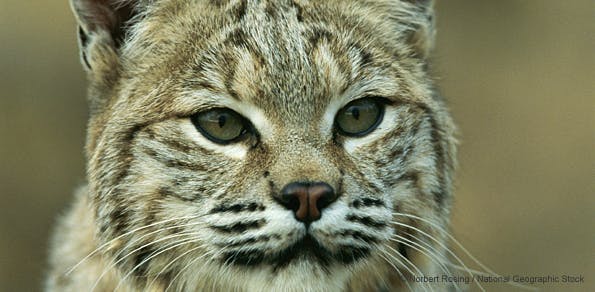Smile, wildlife! You’re on candid camera.
When Defenders’ Northern Rockies Representative Dave Gaillard set up cameras in the wilds of western Wyoming in early August, he wasn’t sure what he would find. Dave knew the area was a vital movement corridor for many species (see slideshow in original blog post), including mule deer, elk, moose and pronghorn antelope. But, as an expert on mid-sized carnivores, he was most interested in capturing on film one of the most elusive animals of all—the imperiled Canada lynx.
Lynx are extremely rare and stick to remote alpine regions where they can hunt snowshoe hares, their primary prey. Because of their unique habitat requirements, lynx populations are spread very thin in isolated mountain forests across the Rocky Mountains at very low densities. In fact, scientists believe there may be as few as 10 individuals in the entire greater Yellowstone ecosystem encompassing the national park and surrounding areas.

In three consecutive years, lynx were tracked moving through the Hoback Rim of the Wyoming Range. The white box indicates the corridor where cameras were placed in hopes of documenting lynx in the area.
That’s why protecting their habitat is so important. The area where Dave put the cameras is along the eastern portion of the Hoback Rim of the Wyoming Range in Bridger-Teton National Forest, a relative “hot spot” of lynx activity in previous years. (One research study shows lynx using the area in three consecutive years. See map at left.)
Unfortunately, the U.S. Forest Service has been considering a proposal to allow oil and gas exploration smack dab in the middle of this important wildlife corridor. Dave’s hope is that by documenting the wildlife that use the corridor, we can help convince the Forest Service not to approve the project, or at least not without substantial modifications to ensure lynx and other affected wildlife will not be harmed..
What Dave found was impressive indeed. See the video below compiled from all the footage captured by three remote cameras in just over a month. Mule deer, moose, a giant bull elk, a black bear, a bobcat (we think)**, either a fox or a coyote (too hard to tell)**, a couple domestic cows, even a few human hunters wandering by.
Sadly, no lynx this time. But the video is an excellent reminder of the great diversity of animals that we’re fighting to protect on our public lands.
Thanks to Dave and citizen scientists Kerry Gaillard and Michael Osgood for all their hard work!
Learn more about Defenders work in the Northern Rockies and our joint efforts to protect the Wyoming Range
**In case you missed them, here are some still images of the suspected bobcat and fox/coyote.








Follow Defenders of Wildlife
facebook twitter instagram youtube tiktok threads